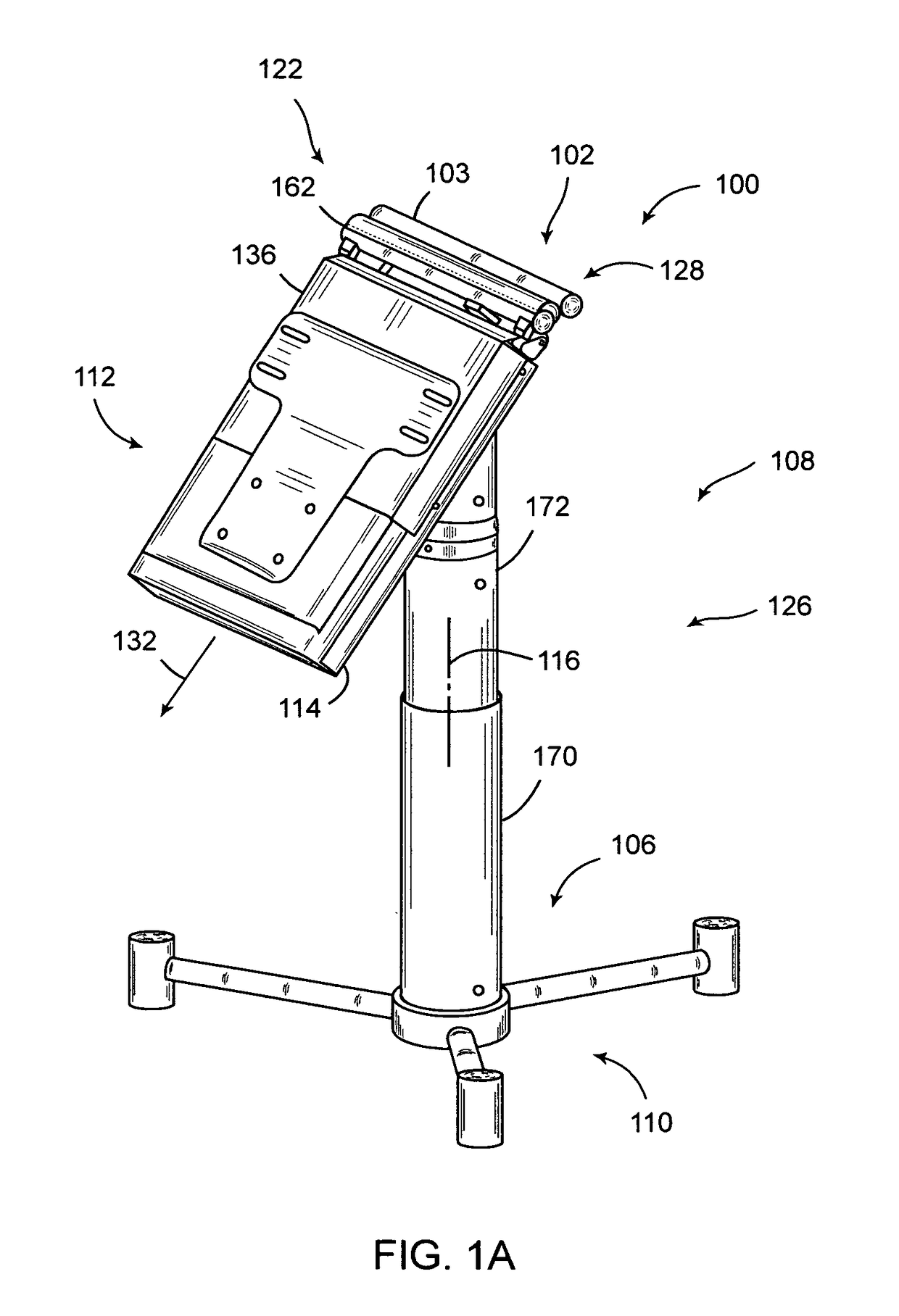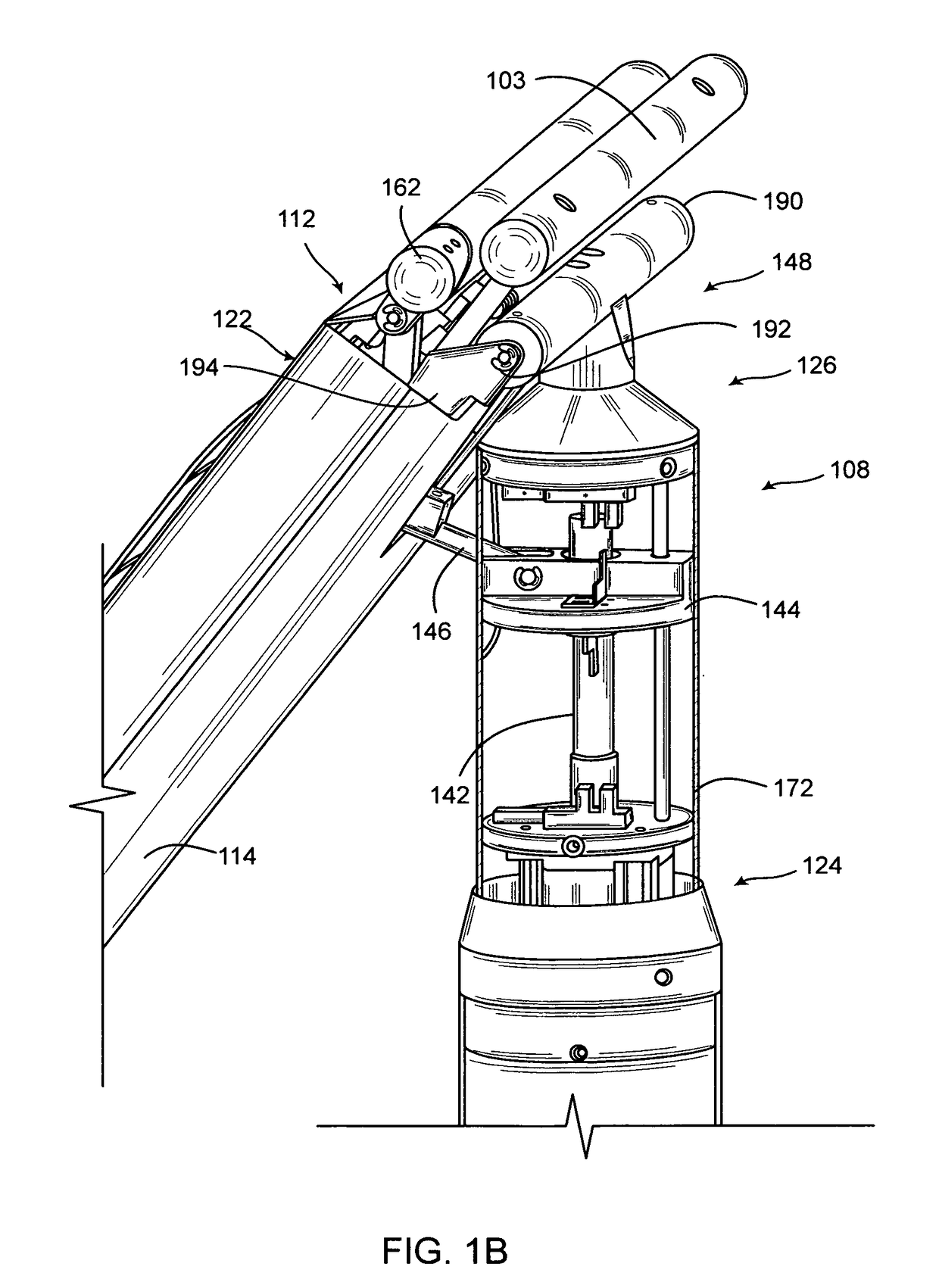Portable resetting device
a resetting device and portable technology, applied in the field of medical systems, can solve the problems of pain, dislocation of joints, drug administration, etc., and achieve the effect of improving patient comfort and physical activity, reducing pain, and improving patient comfor
- Summary
- Abstract
- Description
- Claims
- Application Information
AI Technical Summary
Benefits of technology
Problems solved by technology
Method used
Image
Examples
Embodiment Construction
[0039]The present invention is directed at a resetting device for reduction of a shoulder dislocation that minimizes pain, and further eliminates or greatly reduces the need for any pain drugs for the procedure.
[0040]Turning to the drawings, wherein like components are designated by like reference numerals throughout the various figures, attention is initially directed to FIGS. 1A to 1F which illustrate a resetting device 100, and, in particular, FIG. 1A which is a front-side perspective view of an embodiment of the resetting device 100.
[0041]In FIG. 1A, a right side injured shoulder, for example, not shown, is supported by an underarm support 102 having an underarm support member 103. A patient, not shown, is sitting in a chair, not shown, facing the front with the right arm, not shown, over the underarm support member 103 with the armpit resting against the underarm support member 103. The height of the underarm support 102 can be adjusted by a computer controlled motor 104, FIG. ...
PUM
 Login to View More
Login to View More Abstract
Description
Claims
Application Information
 Login to View More
Login to View More - R&D
- Intellectual Property
- Life Sciences
- Materials
- Tech Scout
- Unparalleled Data Quality
- Higher Quality Content
- 60% Fewer Hallucinations
Browse by: Latest US Patents, China's latest patents, Technical Efficacy Thesaurus, Application Domain, Technology Topic, Popular Technical Reports.
© 2025 PatSnap. All rights reserved.Legal|Privacy policy|Modern Slavery Act Transparency Statement|Sitemap|About US| Contact US: help@patsnap.com



